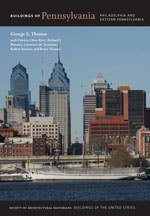
East of Lafayette College is a residential district containing a mixture of nineteenth- and early-twentieth-century houses. The first, built directly east of campus, were for the college's faculty and employees. The hilltop location impeded significant development because of the steep bluff that at its highest point rose to 700 feet above the river below. But in 1888, David W. Nevin, Easton's leading real estate developer, introduced an electric trolley line. At grades in excess of 15 percent, the climb to College Hill was said to be the steepest line yet constructed in the United States. College Hill became the most popular neighborhood for Easton's industrial and merchant class. Beginning in 1890, Nevin sold “villa sites” in Paxinosa Heights at the northeast corner of College Hill, advertising his development as “the new, high, healthful and picturesque suburb of Easton.” At 200 High Street is an important early McKim, Mead and White Shingle Style house for Lafayette College professor John Eyerman. In the northwest corner, the Speer Lumber Company, recently relocated to Easton from Pen Argyl, marketed two hundred pattern catalogue frame houses to working-class buyers. An extant example is at 614 Coleman Street, a two-and-one-half-story frame house with a classically detailed porch.

